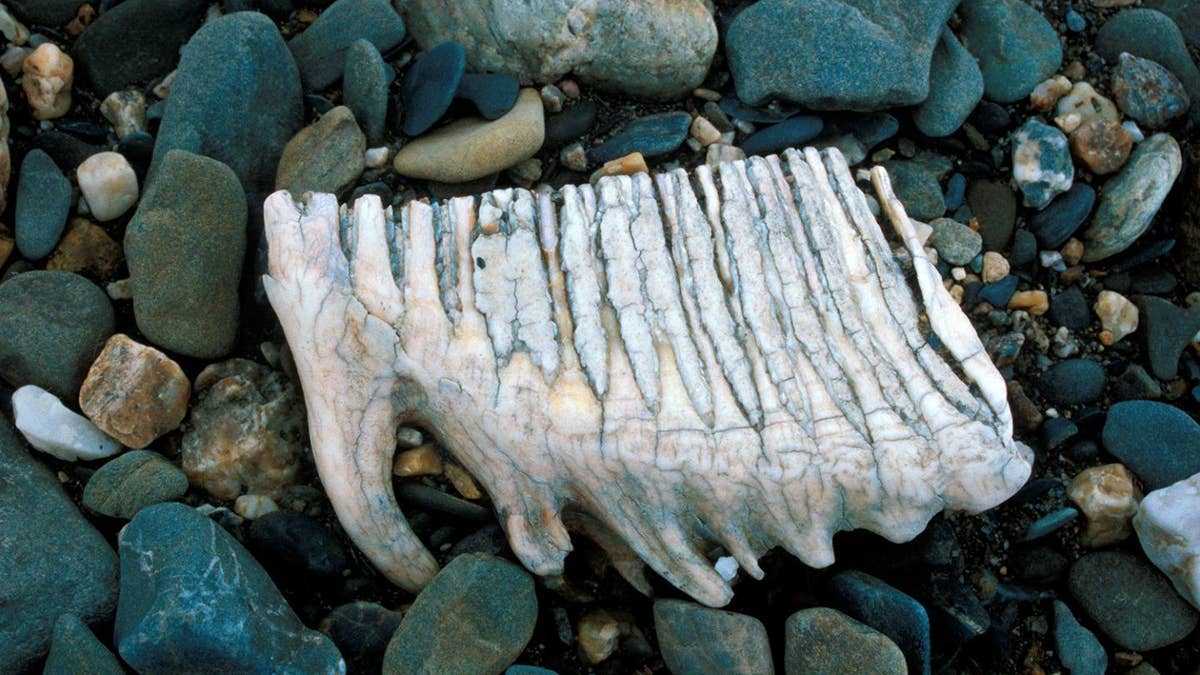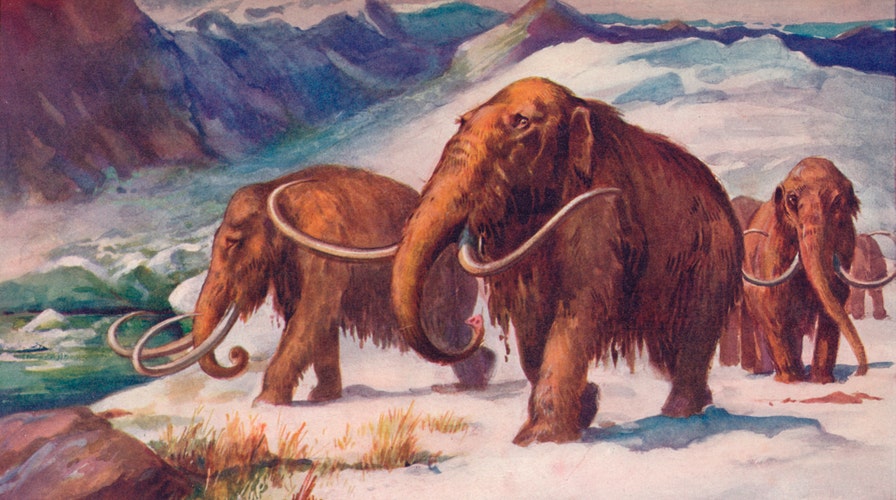Fox News Flash top headlines for Oct. 7
Fox News Flash top headlines for Oct. 7 are here. Check out what's clicking on Foxnews.com
Scientists are unraveling the mystery of how the last mammoths died on a remote island in the Arctic Ocean just 4,000 years ago.
Experts from the University of Helsinki, the University of Tübingen in Germany and the Russian Academy of Sciences have reconstructed the chain of events that led to the mammoths’ demise on Russia’s Wrangel Island.
They believe that a combination of isolated habitat and extreme weather events, and potentially, prehistoric man, doomed the last pocket of mammoths on the Arctic island.
GRUESOME MAMMOTH 'KILL SITE' DISCOVERED
“During the last ice age – some 100,000 to 15,000 years ago – mammoths were widespread in the northern hemisphere from Spain to Alaska,” they wrote in a statement. “Due to the global warming that began 15,000 years ago, their habitat in Northern Siberia and Alaska shrank. On Wrangel Island, some mammoths were cut off from the mainland by rising sea levels; that population survived another 7,000 years.”

A mammoth tooth discovered on Wrangel Island. (Juha Karhu)
Scientists studied the isotope composition of mammoth bones and teeth from Northern Siberia, Alaska, the Yukon and Wrangel Island, spanning from 40,000 to 4,000 years ago. Unlike the remains from other locations, the collagen carbon and nitrogen isotopes from the Wrangel Island remains did not change, despite warming in the climate 10,000 years ago.
“This result contrasts with the findings on woolly mammoths from the Ukrainian-Russian plains, which died out 15,000 years ago, and on the mammoths of St. Paul Island in Alaska, who disappeared 5,600 years ago,” the researchers explained in the statement. “In both cases, the last representatives of these populations showed significant changes in their isotopic composition, indicating changes in their environment shortly before they became locally extinct.”
WOOLLY MAMMOTH TOOTH DISCOVERED IN OHIO CREEK BY 12-YEAR-OLD BOY
The Wrangel Island mammoths, however, appear to have died out suddenly as a result of short-term events.

The early Ice Age, when mammoths roamed the Earth. From Harmsworth History of the World, Volume 1, by Arthur Mee, J.A. Hammerton, & A.D. Innes, M.A. (The Print Collector/Getty Images)
While they lived in milder conditions than, say, their Siberian counterparts, the mammoths of Wrangel Island may have experienced changes in their drinking water. Researchers found levels of sulfur and strontium that suggested that the island’s bedrock may have changed, affecting the quality of the drinking water.
An extreme weather event, such as a combination of rain and snow that covered the ground with a thick layer of ice could also have led to the mammoths’ destruction by preventing them from accessing food.
WOOLLY MAMMOTH MYSTERY SOLVED? STUDY REVEALS SHOCKING DETAILS ABOUT PREHISTORIC CREATURE
"It’s easy to imagine that the population, perhaps already weakened by genetic deterioration and drinking water quality issues could have succumbed after something like an extreme weather event,” said professor Hervé Bocherens from the Senckenberg Center for Human Evolution and Palaeoenvironment at the University of Tübingen and a co-author of the study.
Humans could also have played a role in dooming the mammoths to extinction. “The earliest archaeological evidence of humans on Wrangel Island dates to just a few hundred years after the most recent mammoth bone,” scientists wrote in the statement. “The chance of finding evidence that humans hunted Wrangel Island mammoths is very small. Yet a human contribution to the extinction cannot be ruled out.”
10 YEAR-OLD TRIPS INTO MILLION-YEAR-OLD FOSSIL DISCOVERY IN NEW MEXICO
The researchers say that the study has implications for the modern era, highlighting the environmental and human risks to isolated populations of large mammals. The study has been published in Quarternary Science Reviews.
Other mammoth discoveries have been garnering attention. Earlier this year, a 12-year-old boy discovered a woolly mammoth’s molar on the grounds of a resort in northeastern Ohio.
Last year, archaeologists in Austria uncovered a gruesome "kill site" where Stone Age people slaughtered mammoths.
BOYS DIG UP PREHISTORIC MASTODON FOSSIL IN MISSISSIPPI
In 2012, a nearly complete skeleton of a woolly mammoth was unearthed in France, much to the delight of archaeologists. Woolly mammoth finds, however, are more common in Siberia, where frozen remains have been discovered on a number of occasions.
CLICK HERE FOR THE ALL-NEW FOXBUSINESS.COM
The unearthing of well-preserved woolly mammoth remains and advances in genetic research have fueled discussion that the long-extinct beasts could be cloned. However, the ethics of scientists bringing about the possible “de-extinction” of a species have been hotly debated, with critics saying that resources would be better spent on existing animals.
Fox News’ Willie James Inman, Joseph J. Kolb and Chris Ciaccia contributed to this article. Follow James Rogers on Twitter @jamesjrogers





















